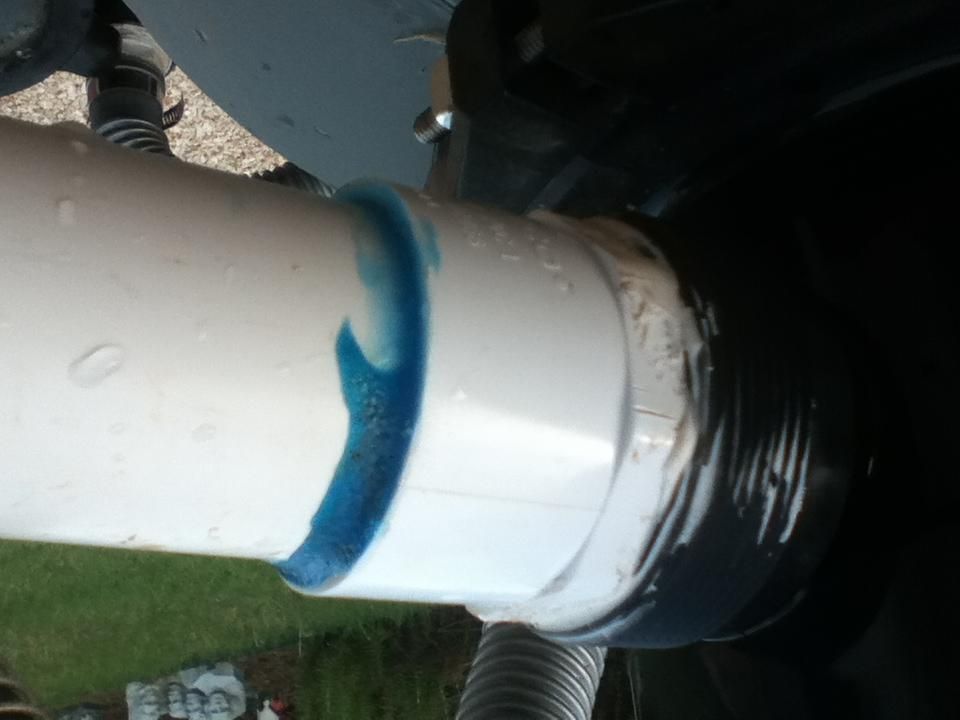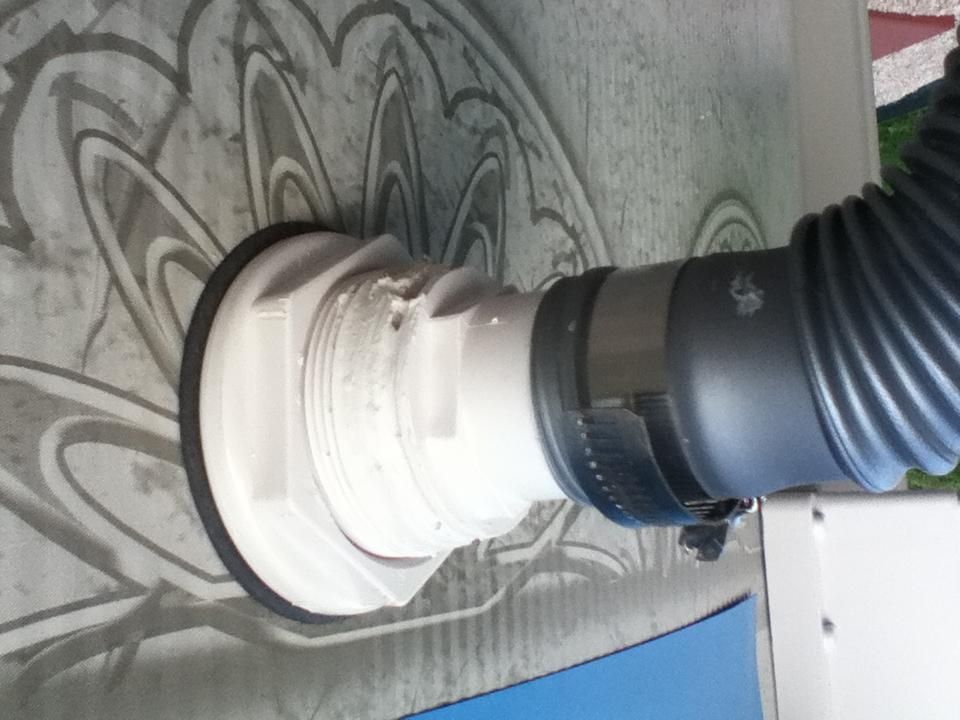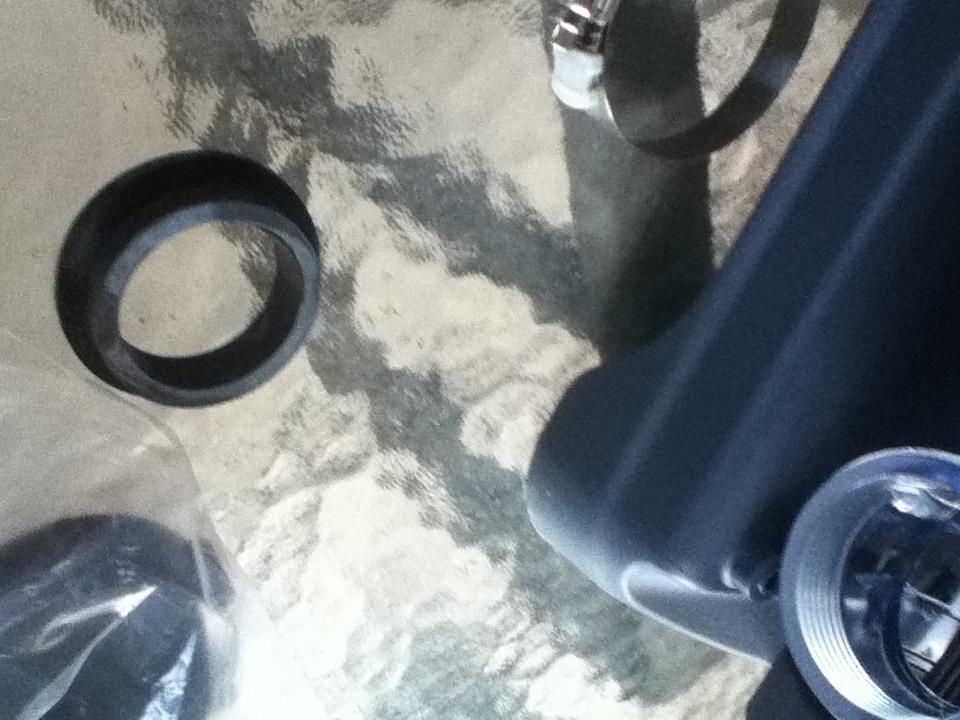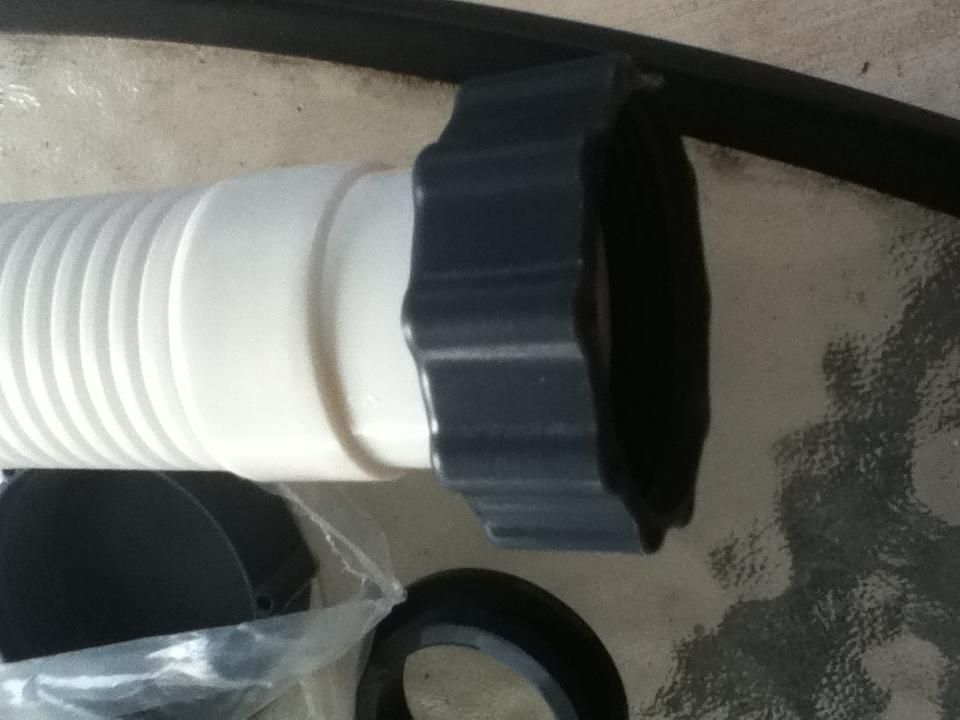Okay, now I'm trying to figure out the best way to hook up my SWG, plumbing wise. It needs to go between the sand filter and the return jet. Here's the port out of my sand filter:
I definitely can see threads on the outside (i.e. male threads) that aren't being used, but it kind of looks like the white pipe is connected via threads, but on the inside, and instead of teflon tape (like I like to use), the installer used silicon. I think I remember him saying he prefers silicon. If I'm right, then I guess I should be able to unscrew this by hand.
Here's the return jet:
Now the instructions say to take this hose and run it from the filter to the SWG, but it's really meant for intex pools with intex equipment, which I don't have. Here's the type of connection on the SWG it needs to connect to:
Actually this is the output port that leads to the jet, but the input port to the SWG is the same kind of threaded connection. By the way, that gasket you see comes out easily:
The hose they give me to connect from the SWG to the jet is this:
Both ends of the hose are the same.
My idea is to get some rigid PVC with threaded adapters on the ends of them. On the filter side, I'm thinking that maybe I can find a female adapter to screw right on to the outside of the sand filter port. Note that right now, I'm connected to the inside of it. I suppose I could do that again with a male adapter, but I'd have to carefully scrape out all the silicon (which I may want to do anyway.) I'm not sure if there's any particular advantage to using the outside threads or the inside threads.
Then on the SWG side, if I could find another female adapter that matches those threads, do you think I could just screw it on there with teflon tape, and pull out the gaskets and not use them? Is it safe to attach rigid PVC to those clear plastic threads on the SWG? I assume the reason the gaskets are there is because the included hose is not rigidly attached to the female threads on the end of the hose (kind of like how garden hoses are attached to their threads). The gasket probably forms a watertight seal. But if I use rigid PVC pipe, I figure it'll already be water tight, so no need for the gaskets.
Then on the return jet side, a similar idea to screw on to the SWG, and on the jet, instead of attaching where the pictured grey hose (the one that I currently have installed) clamps on, I could take that white male threaded adapter you see in the picture and cement it to my PVC pipe, or if it's not the right kind of adapter than you can cement to, I could always buy another adapter from home depot with the same size threads and cement the pipe to that. (I'll know better when I take it apart to get a better look at it.)
Anyway, I'm not an expert at this, but I wanted to pass my ideas here first to see if anybody sees anything wrong with my plan. Especially the part where I connect threaded PVC adapters directly to the clear plastic threaded ports on the SWG using teflon tape. The only thing I worry about is that clear plastic somehow doesn't look as hardy as PVC, but it's not like I'm going to put a bunch of undue pressure on it.






